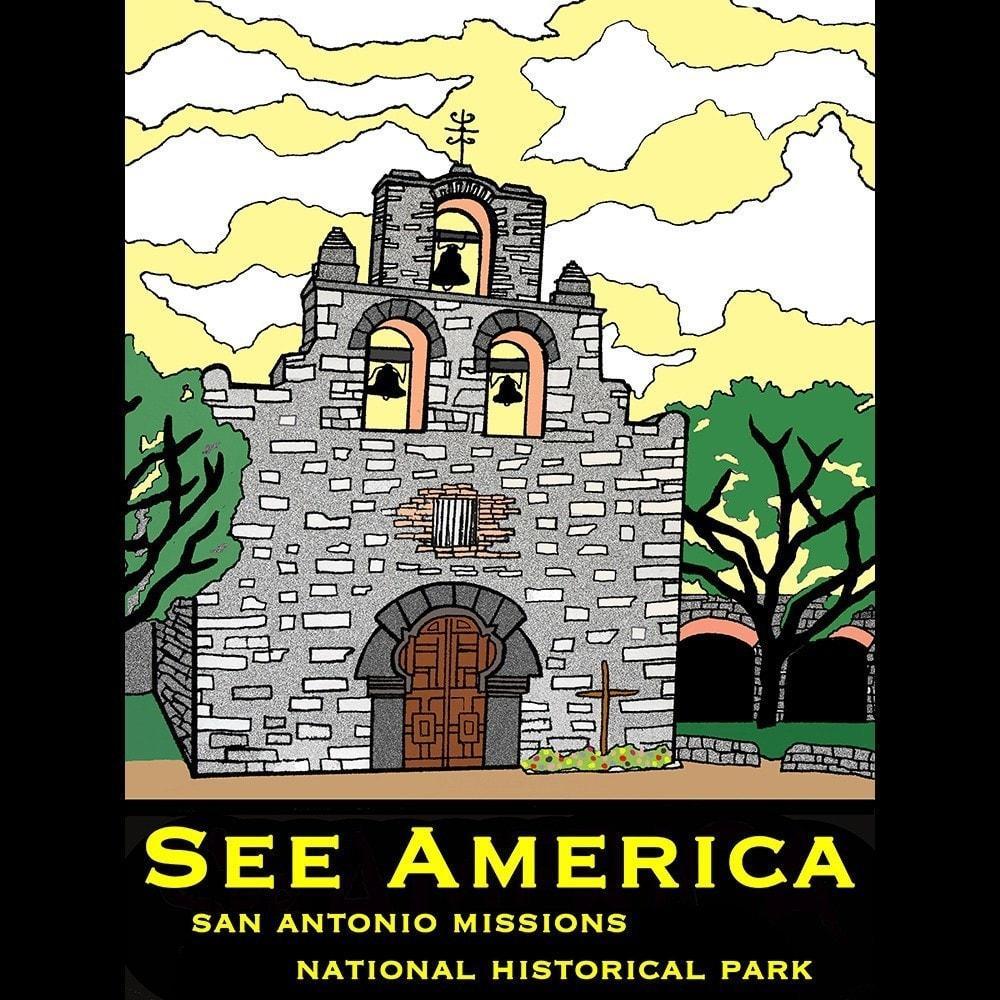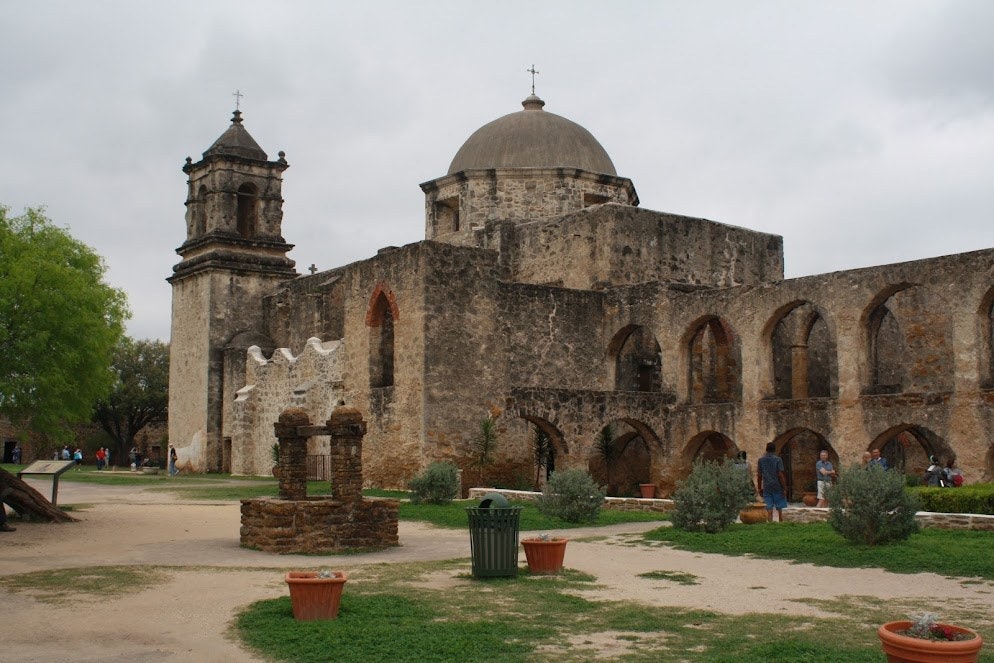Assisted San Antonio Missions National Historical Park Tours: Discover the History
Assisted San Antonio Missions National Historical Park Tours: Discover the History
Blog Article
Discover the Rich History of San Antonio Missions National Historical Park: a Comprehensive Guide to Its Cultural Importance and Preservation Initiatives
As we get started on a trip via the historic background of these objectives, we uncover architectural marvels that have stood up to the test of time. Beyond the plain physical structures, each objective, especially Goal Espada, brings an extensive cultural weight that resonates deeply with those who explore its grounds.
Historical Background of San Antonio Missions
The roots of the historic background of the San Antonio Missions run deep, linking Spanish early american impact with native cultures in the South Texas area. Developed in the early 18th century, these missions were established by Franciscan friars with the objective of spreading Christianity and converting the neighborhood aboriginal populations. San Antonio Missions National Historical Park events. The Spanish Crown sustained these objectives as a way of strengthening control over the region and broadening their impact in the New World
The Spanish promoters played a significant function in forming the social landscape of the area, presenting new farming strategies, design, and spiritual techniques. The aboriginal areas, such as the Coahuiltecans and other tribes, communicated with the Spanish settlers, resulting in a mixing of customs and beliefs.
Over time, the objectives came to be not only spiritual centers however also financial and social hubs, drawing in settlers from different histories. Today, the San Antonio Objectives stand as a testimony to this complex background, showing the withstanding tradition of Spanish manifest destiny and the durability of aboriginal societies in South Texas.
Building Marvels of the Goals
Having actually laid the foundation of social exchange in between Indigenous areas and spanish missionaries, the architectural marvels of the San Antonio Missions exhibit a blend of European and native workmanship that proceeds to captivate site visitors. These objectives, including Objective San Jose, Objective Concepcion, Goal San Juan, Objective Espada, and the Alamo, display distinguishing characteristics such as luxuriant facades, detailed makings, colorful frescoes, and tough stone wall surfaces. The Spanish Colonial style, characterized by arched doorways, belfry, and large yards, shows a harmonious blend of Spanish style elements with aboriginal structure strategies.
Each goal within the San Antonio Missions National Historical Park tells an one-of-a-kind story through its design, highlighting the advancement of building and construction designs and social influences over time. Visitors can admire the competent craftsmanship apparent in the thorough stonework, hand-carved wooden doors, and spiritual iconography adorning the insides. These building work of arts stand as long-lasting testaments to the long-lasting heritage of the missions and the social heritage they represent.
Social Significance of Objective Espada
With its historic roots deeply intertwined with the aboriginal societies of the region, Objective Espada stands as a sign of cultural resilience and adjustment within the San Antonio Missions National Historic Park. Established in 1690, Goal Espada was established by Spanish Franciscans as a method to spread Christianity among the Coahuiltecan people while additionally acting as a center for farming and market. The goal's social value exists in its duty as a meeting point in between European and Native American practices, resulting in a special blend of building designs, religious practices, and agricultural methods.
Objective Espada's famous aqueduct, called "Acequia de Espada," is a testament to the design skills of both Spanish and aboriginal peoples, showcasing their cooperation in constructing important waterways for irrigation objectives. This unified fusion of social impacts is additional exhibited in the mission's complex makings, colorful frescoes, and spiritual events that proceed to be exercised to today. As one of the oldest unrestored rock churches in America, Objective Espada stands as a living testament to the long-lasting heritage of social exchange and adjustment that specifies the San Antonio Missions National Historic Park.
Preservation Efforts and Difficulties
Conservation in keeping the historical honesty of Objective Espada encounters a myriad of intricate difficulties that demand innovative options and committed stewardship. As one of the five missions check within the San Antonio Missions National Historical Park, Mission Espada deals with preservation concerns originating from ecological factors, metropolitan advancement, and the continuous battle versus natural degeneration. The fragile equilibrium between saving the original frameworks and making certain site visitor accessibility and safety and security requires thorough planning and implementation.
Initiatives to protect Goal Espada entail a multi-faceted approach that consists of routine maintenance, structural evaluations, and conservation tasks. Collaborations in between park authorities, chroniclers, archaeologists, and local neighborhoods are vital in developing lasting conservation techniques. Challenges such as funding restraints, limited sources, and the demand for specific know-how even more complicate conservation efforts.
Despite these challenges, the dedication to securing Goal Espada's historic value remains undeviating. With proceeded study, neighborhood involvement, and flexible preservation techniques, the conservation of Goal Espada stands as a testimony to the devotion towards securing our social heritage for future generations.
Neighborhood Involvement in Park Conservation

Among the key ways the park includes the community is via volunteer opportunities. Regional residents can join preservation jobs, instructional programs, and special events, allowing them to contribute straight to the preservation of the park. This hands-on participation not just benefits the park in regards to added sources and workforce but also develops a stronger connection between the community and the park itself.
In addition, the park consistently looks for input from local stakeholders, including community groups, organizations, and government agencies, to make certain that conservation efforts align with the demands and worths of the bordering community. By engaging with the neighborhood population in these meaningful ways, San Antonio Missions National Historical Park promotes a culture of preservation and sustainability that will certainly assist maintain this social prize for future generations.
Final Thought

Past the plain physical structures, each mission, significantly Objective Espada, carries a profound cultural weight that resonates deeply with those who discover its grounds. These missions, consisting of Mission San Jose, Objective Concepcion, Objective San Juan, Mission Espada, and the Alamo, showcase unique functions such as luxuriant facades, elaborate carvings, colorful frescoes, and tough rock walls.With its historic roots deeply intertwined with the indigenous societies of the region, Goal Espada stands as an icon of cultural durability and adaptation within the San Antonio Missions National Historical Park (San Antonio Missions National Historical Park in TX). As one of the earliest unrestored stone churches in America, Objective Espada stands as a living testimony to the enduring tradition of cultural exchange and adjustment that defines the San Antonio Missions National Historical Park

Please visit one of our local supporters- Https://www.brownstonelaw.com/
Report this page